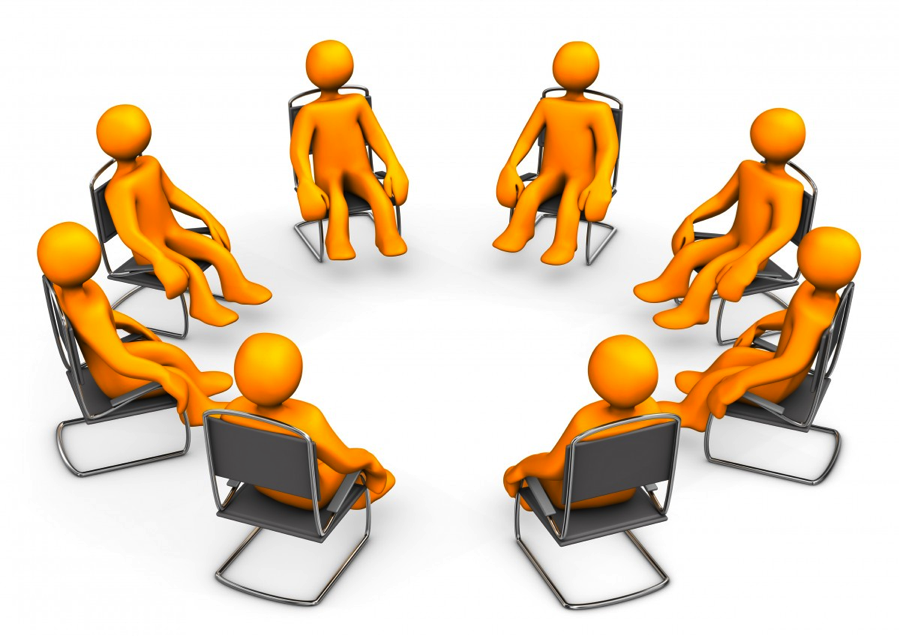He probably thinks I’m an idiot for stammering my words.
They obviously hate me because they didn’t say hi when I walked by.
I won’t be able to go to that social event without everyone judging me.
Everyone is staring at me.
She laughed when she walked by, so she must be making fun of me.
I’m going to make a mistake and look stupid.
I won’t be able to come up with enough things to say in that social interaction, which
will make me look boring.
If I try going to that social event, I’ll feel too anxious. So it won’t even be worth it.
They are going to notice me shaking, which will make me look weak.
She’ll think I’m awkward or weird.
Developing a New Relationship with Old Thoughts
Unhelpful automatic thoughts like these pop into everyone’s head at some point, and those with social anxiety experience these thoughts fairly frequently and intensely. Therefore, we tend to believe that the problem with social anxiety is the frequency and intensity of these unhelpful automatic thoughts. In other words, we believe that having the unhelpful automatic thoughts is the problem. However, every individual has had thoughts like these – not just people with social anxiety. And individuals whose social anxiety is no longer debilitating report that these thoughts do not disappear altogether.
So if having these thoughts isn’t the problem, what is?
It is actually our relationship with these unhelpful automatic thoughts that is so problematic. If I have the thought “I won’t be able to go to the social event without everyone judging me,” and I believe that thought or give importance to it in any way, I’ll be more anxious and less likely to go to the event than if I didn’t believe it or saw it for what it really was: a sequence of words that my brain created. Our tendency to readily believe and give importance to these thoughts creates unhealthy relationships with them that then impacts how we behave in the world.

Take this image for example. What came to mind automatically after looking at this picture? Based on what your automatic thought was, how do you feel toward the light-haired boy? And how do you feel toward the dark-haired boy? How might you act toward each of them? Just one quick automatic thought can pop into your brain and have a great impact on your feelings and actions if you readily believe that thought. However, this ambiguous image could be depicting all types of scenarios: the light-haired boy is putting the sign on the dark-haired boy, the light-hair boy is telling the dark-haired boy about the sign, neither boy notices the sign, or the dark-haired boy put the sign on himself as a prank. There are countless possibilities because we don’t have any tangible information about the scenario.
Automatic thoughts are not things we can control or get rid of. That’s why they’re called automatic. We can’t stop them any better than we can stop ourselves from getting hungry or thirsty. But we can change how we respond to them, just like we can eat instead of starving or drink instead of dehydrating. Believing our helpful or neutral automatic thoughts can actually benefit us, but when we readily believe our unhelpful automatic thoughts, we oftentimes get into trouble – like letting our anxiety prevent us from going to social events or being debilitated about the worry of being judged.
Because it is very difficult to change something we are unaware of, the first step to not allowing these unhelpful automatic thoughts to dictate our actions is recognizing that they are just thoughts and that they are unhelpful. Labeling these thoughts is a good strategy to use for this. So when the thought “I’m going to embarrass myself” pops into your head, you can label it with “That’s an unhelpful automatic thought,” “There my brain goes again,” “That was just a thought,” or any other phrase that is helpful toward recognizing these thoughts for what they truly are – just unhelpful words or images that snuck into your brain.
Once you become better at catching these thoughts, you can work on changing your relationship with them. You can begin to questions and look at them from different angles in order to help you not be controlled by them.
Here are some helpful questions or responses to unhelpful automatic thoughts:
- Regardless of truth, how helpful is this right now?
- What will happen if I continue putting importance on this thought, or giving this thought attention?
- What can I be doing differently right now? What else can I put my attention on right now?
- Is there another way to explain this? Are there any alternative possibilities?
- That was just an unhelpful thought.
- I don’t need to listen to this thought.
- I’ve had other experiences where this was not the case.
- I don’t have any proof to believe that.
Here are some other strategies to use to help decrease the believability or power of these unhelpful automatic thoughts:
- Say the thought in a silly voice.
- Sing the thought.
- Picture the thought floating away like a balloon, wave, bubble, etc.
- Respond to the thought like you would if a bully was saying it to you.
- Name the story your mind is telling (e.g., There’s the “I’m not capable” story again).
Labeling, questioning, and responding differently to our unhelpful automatic thoughts are great first steps to taking back power over our own lives and not letting social anxiety dictate our actions. Building up more helpful responses and highlighting our helpful automatic thoughts can also allow us to gain a stronger ability to move from a place of confidence or exploration instead of from a place of fear. Click here for further discussion on the role of automatic thoughts in social anxiety.
Written by,
Saryna Konczey, LMFT, LPCC.
Cognitive Behavior Therapy Center of Silicon Valley
NSAC Silicon Valley / Sacramento Valley
Share this blog post











